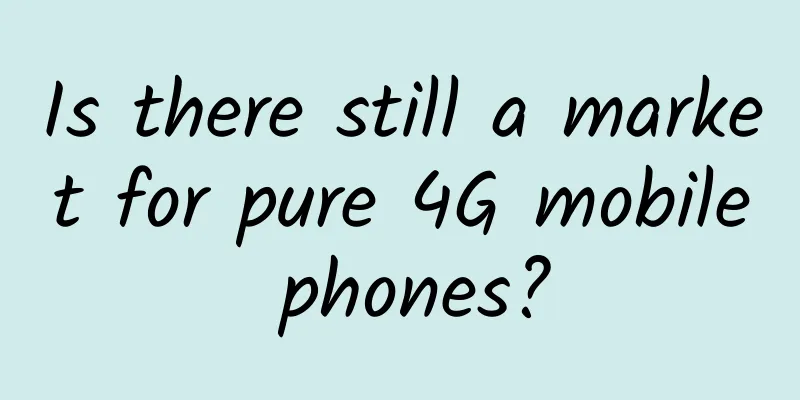Is there still a market for pure 4G mobile phones?

|
According to a report by China Business News, Huawei is actively ordering 4G smartphones and related terminal parts from suppliers, and some component manufacturers have received notifications that they will resume purchasing motherboards and other parts this month.
Huawei did not respond to the above news. We will not comment on the authenticity of the news. What we want to discuss is whether there is a market for pure 4G products at the current stage. We need to look at this question from two aspects: network infrastructure and market segment demand. 4G networks will exist for a long time With the development of 5G services, in order to maximize resource utilization, mainstream operators around the world are planning to achieve minimalist networks by simplifying standards, saving energy and reducing costs, and reducing complexity, thereby reducing network costs. From the perspective of simplifying the standards, the withdrawal of 2G and 3G networks is an inevitable choice, and 4G/5G will coexist and develop in coordination for a long time; of course, the ultimate goal of operators is to achieve only one 5G network, but considering various reasons, this process is very long. How long will it take? In the past, the industry generally believed that it would take at least 10 years. The reason behind this is that 4G is still a full-service basic network, a high-quality network with extensive coverage, and its value is also very obvious. At least it is reflected in several aspects: carrying voice services, the popularization of VoNR seems to be out of reach now, and VoLTE is still the mainstream choice in the market; carrying IoT services, it is an industry consensus to take over 2G IoT services through NB-IoT and 4G Cat1/1bis technology! The long-term existence of the network lays the foundation for terminals and applications, and there will be no embarrassing situation of GSM terminals having no network available. The market segment needs to be real In the current industrial environment, the demand for pure 4G products is obvious, and we can look at it from two dimensions. In terms of products, as mentioned above, 4G still has a large market in feature phones, IoT products, tablets, mid- and low-end mobile phones, etc. Take 4G feature phones as an example. Its biggest selling point is VoLTE, and its business model is to deliver it to consumers through operator centralized procurement and subsidies, with the aim of accelerating the withdrawal of GSM from the network. The same is true for IoT products. NB-IoT is the mainstream standard of 5G mMTC, with a long life cycle and a wide range of application scenarios. From a regional perspective, although 5G mobile phones have accounted for more than 60% of the total shipments in the domestic market (64.1% in October); from a global market perspective, Eastern Europe, Russia, Asia-Pacific, the Middle East, Africa and Latin America are still 4G markets. Some regions only provide 4G networks, and 4G products are still competitive. For Huawei, which has been suppressed without reason, it is completely understandable to restart the production of 4G terminal products at this time. Although Huawei will not launch ultra-low-end products, related products can solve the demand for mobile phones and tablets in most overseas regions, stabilize the channels, retain the team and the spark, and wait for the opportunity to turn around in the future. There is hope as long as you are alive! |
<<: Current limiting is never an easy task!
Recommend
Research shows: 5G will drive the development of the digital economy
How does 5G fit into this? As remote work, video ...
Dynamic routing protocol OSPF basics, OSPF message, LSA, one minute to understand
1. Introduction to OSPF OSPF (Open Shortest Path ...
“Number Portability” is launched nationwide! Who will be the next “pain point” to be solved?
The national "number portability" servi...
China Unicom SMS has a large-scale failure: mobile phones cannot receive verification codes. Official: Emergency processing is in progress
On February 10, the last working day, China Unico...
How many hurdles does industrial digital transformation have to overcome? Wind River provides a cost-effective option that integrates the old and the new
[51CTO.com original article] "It's time ...
OneTechCloud: 20% off all VPS hosting, starting from 25 yuan/month, Hong Kong CN2&CMI/US CN2 GIA&9929 dual ISP optional
OneTechCloud was founded in 2019 and mainly provi...
Faced with the policy requirement of "speeding up and reducing fees", why don't operators respond in this way?
As the Internet becomes more popular, the intelli...
AlphaVPS: 128GB-2TB large hard disk VPS annual payment starts from 15 euros
AlphaVPS is a Bulgarian hosting company registere...
In the era of cloud computing, there are three network factors that enterprises cannot ignore!
In the era of distributed interconnected cloud ho...
As of December 2020, there are 229 million 5G users worldwide
On December 22, according to foreign media report...
Three major dilemmas of big data
【51CTO.com Quick Translation】 Big data, as a set ...
Lisa Host: Los Angeles Cera Data Center CN2 High Defense VPS monthly payment starts at 40 yuan, support 2 yuan/day trial
I shared information about Lisa hosts in the midd...
Guess how much of Huawei Cloud's "black technology" is used in Huawei Mall (Vmall)?
[51CTO.com original article] Within a few days af...
Yunnan Telecom will gradually shut down its 3G network starting June 1
Yunnan Telecom recently issued an announcement st...
5G: What it means and why we'll never need 6G
The launch of 5G isn’t all that far away, with ro...









